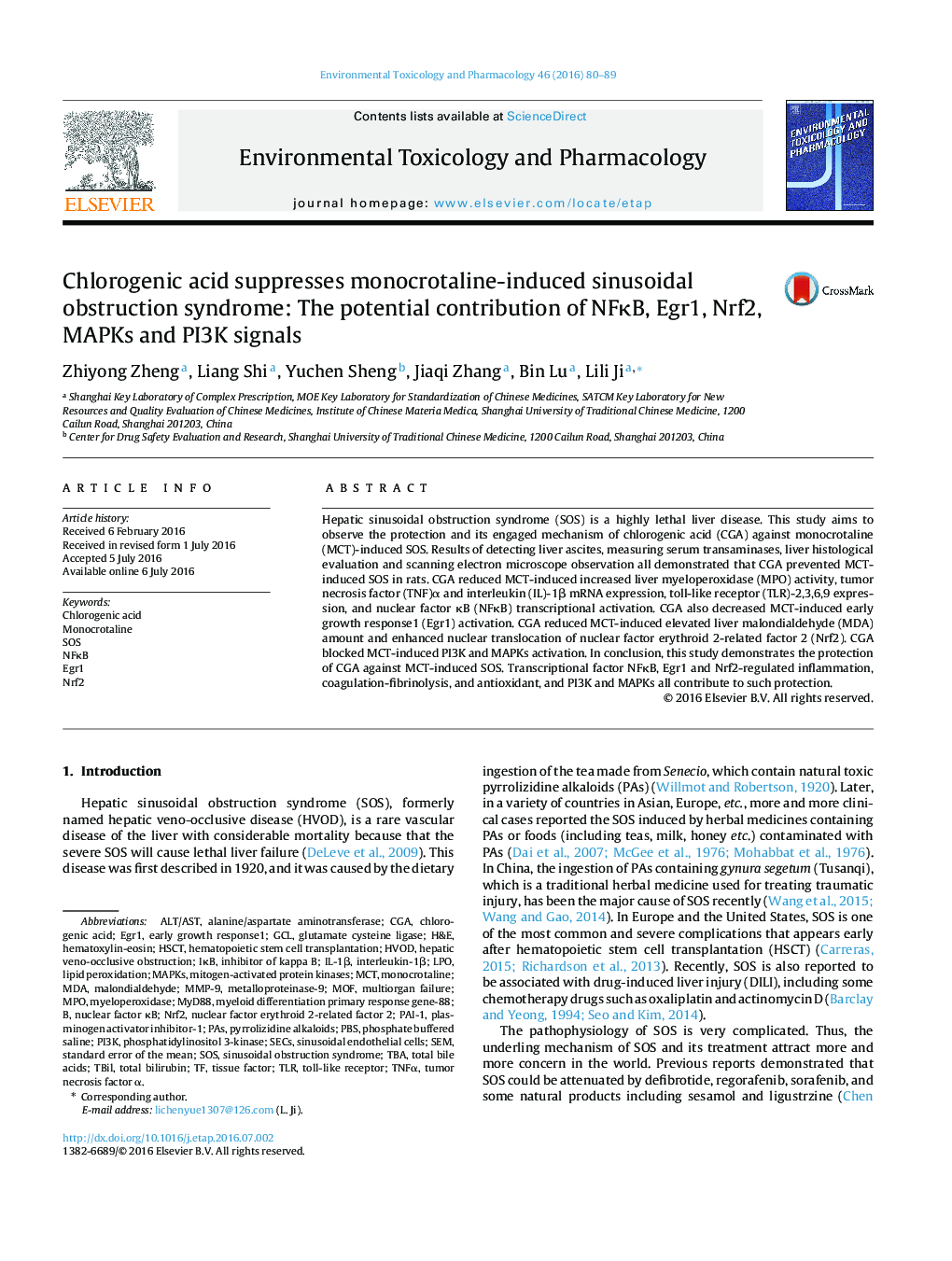| Article ID | Journal | Published Year | Pages | File Type |
|---|---|---|---|---|
| 2582816 | Environmental Toxicology and Pharmacology | 2016 | 10 Pages |
•CGA attenuated MCT-induced SOS in rats.•CGA attenuated MCT-induced hepatic inflammation and oxidative injury.•CGA inhibited MCT-induced transcriptional activation of NFκB and Egr1.•CGA enhanced Nrf2 transcriptional activation.•CGA abrogated MCT-induced activation of MAPKs and PI3K signaling pathways.
Hepatic sinusoidal obstruction syndrome (SOS) is a highly lethal liver disease. This study aims to observe the protection and its engaged mechanism of chlorogenic acid (CGA) against monocrotaline (MCT)-induced SOS. Results of detecting liver ascites, measuring serum transaminases, liver histological evaluation and scanning electron microscope observation all demonstrated that CGA prevented MCT-induced SOS in rats. CGA reduced MCT-induced increased liver myeloperoxidase (MPO) activity, tumor necrosis factor (TNF)α and interleukin (IL)-1β mRNA expression, toll-like receptor (TLR)-2,3,6,9 expression, and nuclear factor κB (NFκB) transcriptional activation. CGA also decreased MCT-induced early growth response1 (Egr1) activation. CGA reduced MCT-induced elevated liver malondialdehyde (MDA) amount and enhanced nuclear translocation of nuclear factor erythroid 2-related factor 2 (Nrf2). CGA blocked MCT-induced PI3K and MAPKs activation. In conclusion, this study demonstrates the protection of CGA against MCT-induced SOS. Transcriptional factor NFκB, Egr1 and Nrf2-regulated inflammation, coagulation-fibrinolysis, and antioxidant, and PI3K and MAPKs all contribute to such protection.
Graphical abstractFigure optionsDownload full-size imageDownload as PowerPoint slide
